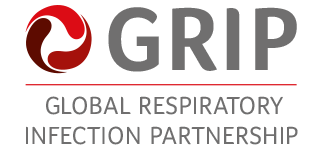GRIP achievements
GRIP achievements
In 2011, discussions surrounding potential antibiotic resistance containment initiatives commenced and a small group of experts met to discuss the European situation.5 In 2012, GRIP was formed and shortly thereafter, the first GRIP report was developed, a paper published6 and the GRIP website launched.
In 2013, GRIP activities accelerated with the launch of the pentagonal (5Ps) framework, the development of an associated global toolkit for local adaptation and a suite of primary care materials to improve communication between HCPs and patients. This included a 3-step approach for prescribers, the pharmacy team and patients to guide the URTI consultation. The 5P framework, advocated for the non-antibiotic management of URTIs, highlights five key focus areas for antibiotic stewardship (policy, prevention, prescribers, pharmacy, patient). These were presented at a 2-day global Summit and a supplement of the 5P approach was published in the International Journal of Clinical Practice.7 Plans to rollout these materials and hold country-specific advisory boards are active in many countries—examples of which are outlined in this report.
GRIP aims to increase their global presence further afield with the initiation of additional local activities in 2014.
GRIP publications to date
- Essack S for GRIP. GRIP’s Pentagonal Framework for a Global Change in Antibiotic Resistance. To be presented at the Geneva Health Forum 2014, Geneva, Switzerland, April 2014.
- Essack S for GRIP. GRIP’s Pentagonal Framework for a Global Change in Antibiotic
- Resistance. To be presented at the Geneva Health Forum 2014, Geneva, Switzerland, April 2014.
- Essack S and Pignatari AC. A framework for the non-antibiotic management of upper respiratory tract infections: towards a global change in antibiotic resistance. Int J Clin Pract Suppl. 2013;(108):4–9.
- GRIP. Antibiotic misuse – stop talking, start acting. Advisory board report. 2013. Accessible here.
- GRIP. Antibiotic misuse and sore throat treatment. Advisory board report. 2012. Accessible here.
- Oxford J and Kozlov R. Antibiotic resistance-a call to arms for primary healthcare providers. Int J Clin Pract Suppl. 2013;(180):1-3.
- Van der Velden AW, et al. Prescriber and patient responsibilities in treatment of acute respiratory tract infections – essential for conservation of antibiotics. Antibiotics. 2013;2(2):316–327.
- Van der Velden AW, et al. Sore throat: effective communication delivers improved diagnosis, enhanced self-care and more rational use of antibiotics. Int J Clin Pract Suppl. 2013;(108):10–16.
The GRIP 1, 2, 3 approach6
This 3-step approach from GRIP guides HCPs through their interactions with patients when discussing appropriate antibiotic use. These key points are memorable and can trigger further education points enhancing the doctor-patient communication. The 3-step approach has also been adapted for the pharmacy team and for patients.
- Address the patient’s concerns—identify patient concerns/expectations and determine the primary reason for consultation.
- Be vigilant: assess severity—evaluate the seriousness of infection and risk of complications by checking for high-risk criteria and red flag symptoms.
-
Counsel on effective
self-management—provide reassurance
around the self-limiting nature of
URTIs, recommend symptomatic relief and
advise on next steps (expected duration
of symptoms and reasons for
re-consultation).
Summit results
The GRIP Summit 2013 was a huge
success with representatives from 24
countries in attendance. The GRIP
framework and 1, 2, 3 materials were
launched, receiving positive feedback
from the HCP attendees. GRIP aims to
build on this engagement with a second
Summit in summer 2014.
- 63% of HCPs who attended did so to enhance understanding of best treatment practice for RTIs.
- 88% of HCPs either “strongly agreed” or “agreed” that the GRIP Summit 2013 was relevant to their day-to-day work.
- 96% of HCPs agreed that the information and material provided has given them some additional points to discuss with patients in relation to RTI management.
- 75% of responses for the presentations, by HCPs, rated them as either “excellent” or “very good”.
- 96% HCPs would share the GRIP materials and 1, 2, 3 approach. Ways of sharing materials included translation and distribution, peer review, treatment forums, inclusion in educational programmes or alongside antibiotic awareness days/weeks.
The 5P framework for the non-antibiotic management of URTIs7
A 5-part framework was developed to highlight key areas of focus for antibiotic stewardship to include prescribers, pharmacy staff, patients, policy and prevention.

Figure 1: The GRIP’s pentagonal framework for change encompasses five key areas—Policy, Prevention, Prescriber, Pharmacy and Patient
